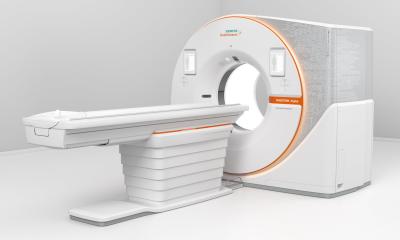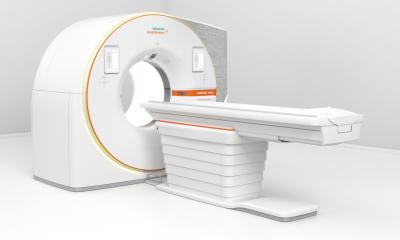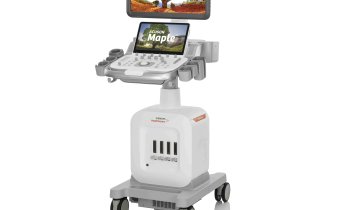Peter Loescher: The unknown famous manager
When the Siemens board of directors announced its decision for the new Siemens CEO on Sunday, the economic world was surprised: Not only that the name Peter Löscher was never mentioned in the previous discussions about a successor of Klaus Kleinfeld, but hardly anybody knew Loescher´s name in any enconomic context.

But the former head of Merck&Co Inc. has long and successful experiences in the medical world and already spoke with EUROPEAN HOSPITAL in his function as President and CEO of GE Healthcare Bio-Science in 2006. Find out more about the new man at Siemens and read his interview "Partnerships to personalise medicine"
Partnerships to personalise medicine
PL: Yes, and we’re extremely excited about this, because obviously both companies are leaders in personalised healthcare. Roche is very focused on the neurological franchise, as well as oncology, and we collaborate on Alzheimer’s disease. Fundamentally, the mechanism of this disease is not understood. Presently the assumption is that the build-up of amyloid plaques in the brain basically is a key contributor to the development of Alzheimer’s. Roche is working on therapy areas, with compounds that basically try to arrest the disease, or diminish the plaque burden and therefore arrest the disease. To really image this you need a biomarker, and we have diagnostic molecular imaging agents that really image the build-up, so using these we can identify the disease in patients before there are symptoms and therefore help Roche to really stratify the patient population in the right way. At the same time we can also image the amyloyd plaque burden in the brain - if it is stalled or is decreasing - so we can show the effectiveness of the therapy. So hopefully, through our research collaboration, the result will be that both products will be licensed by the authorities. Then the scenario would be a tandem development of what we have already and you would first get a diagnosis then the therapy, and see, in real time or in a very short period of time, whether the therapy really works or does not work for you. This is very much the paradigm of personalised healthcare. So it’s a key co-operation for us. ‘Molecular imaging is the future. It will allow us to really understand the disease burden in different areas. So Roche is one example, and we have another collaboration with Lilly, also for Alzheimer’s, and in the future these could become role models for working together in the pharmaceuticals industry.
PL: It’s basically for the same disease - Alzheimer’s. Our imaging agents can be used across the pharmaceuticals industry, so it’s not specific for only one therapy and we are therefore working with a number of pharmaceutical firms who have compounds that try to arrest the build-up of the amyloid plaque. Lilly is working in the same field, so we have a similar collaboration with them. We can access Lilly’s compound library to help us to identify, hopefully, a number of leads - which agents or compounds could potentially work as future diagnostics in this disease.
PL: For us it doesn’t matter. Finally the medical professionals will decide. It’s not a question of either/or. I think both will be hugely important, and you will have PET, for example - PET- CT is an important area. We also work on another compound, C13, in the research field, which, if it works, will allow metabolic imaging on an MR machine. So the answer is, we don’t mind. We are advancing the technology in all areas, so physicians can make their own decisions.
PL: This is the new world of personalised healthcare, and it has needed a very solid understanding of the molecular imaging basis. So, historically speaking, imaging agents used to be structural and now we are moving the whole paradigm to the molecular imaging world, through which we can really create this linkage between therapy and diagnostics. We are very excited about that.
PL: Right. We are at the threshold, an early research and development stage, but over the next 5-10 years this could be a very important way of improving patient care globally. I have just returned from Japan where the overall healthcare costs are 42 trillion Yen (around 295 billion Euros) and government officials made a point of saying: ‘If we do not change healthcare delivery as it is done today, by 2020 the 42 trillion will become approximately 90 trillion. So, who would or could pay for this? You would have to improve prevention and diagnose diseases earlier - one of the ways in which we could contribute.’
PL: We entered the field and focused on this area a number of years ago, so we are the market leader, with a significant lead over our competitors in this field - and these are very good, respected competitors. Schering, for example, is trying to advance in this area. So, yes, the industry is trying to replicate what we are doing, but we definitely have the lead and the advantage of being the only company that can link diagnostic pharmaceuticals together, really the only one to know how the technological roadmap looks for different modalities over coming years, and to be able to ask: What are the imaging needs and unmet medical needs to direct the equipment business to really focus on the imaging agents? We have structured our research activities, focusing basically on oncology, neurology and cardiology, and have the broadest based molecular imaging portfolio in the industry and can link them together.
PL: I agree, but would not be surprised if other companies try to follow our lead. When you engage in a strategic partnership, particularly in molecular imaging, you have an element of how you have to adapt the equipment side of the business. What are the software capabilities that you need around the imaging agents? For example: We are the only company that already has a molecular imaging agent (called DatSCAN) on the market in Europe. Of course we have developed a software programme around it, to help physicians to clearly optimise and simplify the reading of images, then to have a database available at the end of the day, which hopefully will link all the cases to a certain database and say, ok, an image that looks like this, against the database, is diagnosed as an early onset. This hopefully allows physicians to make more informed decisions, because finally it’s the clinician’s decision, although you help him to guide and create more certainty around that decision-making. And this includes equipment, software and imaging agents. It’s a clear advantage if you have all three of these together.
01.05.2007
- Alzheimer's (205)
- contrast agents (144)
- cooperation (356)
- CT (604)
- economy (1046)
- medication (528)
- molecular (205)
- MRI (827)
- PET/CT (184)











